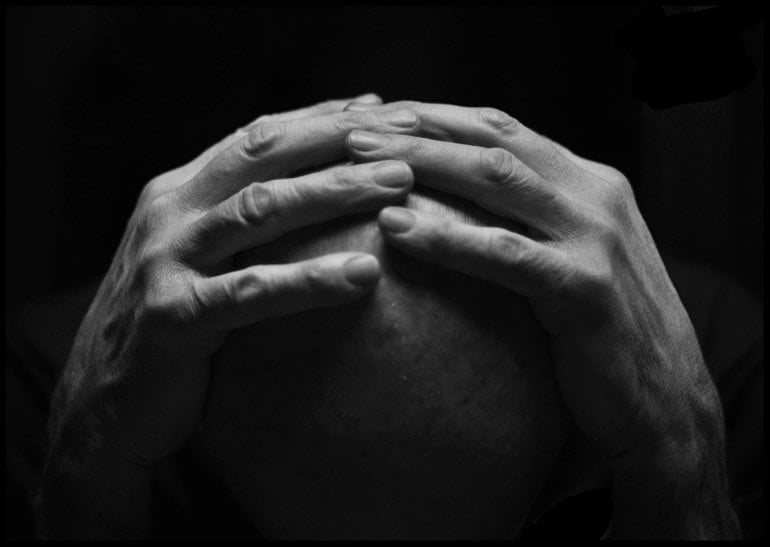Summary: Bisexual people are over six times more likely to engage in non-suicidal self-injury than people of other sexual orientations, a new study reports. Symptoms of depression and anxiety were contributory factors to the self-harming behaviors.
Source: University of Manchester
Bisexual people are up to six times more likely to engage in non-suicidal self-injury compared to other sexual orientations, according to University of Manchester researchers.
The study of self-injury – a common problem that can include cutting, hitting, burning or scratching yourself – used data from 24 independent studies, and is published in the Journal of Affective Disorders.
It found that bisexual people had:
- 6.07 times greater odds of self-injury compared to heterosexual people in the past 12 months.
- 4.57 times greater odds of self-injury than heterosexual people over their lifetime.
- 4.37 times greater odds of self-injury than gay men over their lifetime.
- 2.13 times greater odds of self-injury than gay men and lesbian women over their lifetime.
Symptoms of anxiety and depression were often associated with self-injury in bisexual people, as were problems such as physical assault, bullying and feeling of not belonging, though a small number of studies looked at these associations so more research is needed say the researchers.
With a team of psychologists, trainee clinical psychologist and lead author Brendan Dunlop is currently running an online study investigating the relationship between bisexuality and non-suicidal self-injury called Self injury in young bisexual people: a longitudinal investigation (SIBL) .
SIBL is asking young bisexual people, aged 16-25, to record their experiences each week for six weeks. The team are hoping to investigate whether difficult experiences like biphobia and psychological factors, such as how people think and feel, are related to self-injury for young bisexual people.

He said: “Self-injury can occur across all sections of society, cultures, genders, ages and sexualities. However, mental health outcomes for bisexual people, appear to be consistently worse than other sexual orientations.
“Self-injury often shows an individual is in distress or struggling with overwhelming emotions. But it can also have physical consequences, such as infection and scarring, and increase the risk of other high-risk behaviour, including suicide.
“it’s important we understand why this behaviour occurs, so we can identify ways of better supporting those who struggle with self-injury.”
He added: “This review paper highlights the need for early identification and prevention of self-injury in bisexual people.
“We do recognise, however, that bisexual people may not always attend groups or services because of difficulties of biphobia or difficulties with feelings of belonging within the LGBTQ+ community.
“So alternative means may be necessary to reach them, such as links to mental health support on online, posters aimed at bisexual people displayed in LGBTQ+ venues and support services engaging directly with the bisexual community.
“Educational and voluntary organisations could play a role in supporting bisexual people who may present with these difficulties.
About this psychology research article
Source:
University of Manchester
Contacts:
Haley Bridger – University of Manchester
Image Source:
The image is credited to University of Manchester.
Original Research: Closed access
“Bisexuality and Non-Suicidal Self-Injury (NSSI): A narrative synthesis of associated variables and a meta-analysis of risk” by Brendan J. Dunlop, Samantha Hartley, Olayinka Oladokun, Peter J. Taylor. Journal of Affective Disorders.
Abstract
Bisexuality and Non-Suicidal Self-Injury (NSSI): A narrative synthesis of associated variables and a meta-analysis of risk
Background
Bisexual people have been found to be at increased risk of non-suicidal self-injury (NSSI) when compared to heterosexual and gay or lesbian people. The purpose of this review was to update the estimated risk of NSSI for bisexual people and to examine variables that have been associated with NSSI in this population.
Methods
The protocol for this paper was pre-registered (CRD42019145299). An electronic search of PsycINFO, CINAHL Plus, PubMed, Ovid Online and Web of Science was undertaken from earliest available date to October 2019. Twenty-four eligible papers were identified. Meta-analyses, including moderator analysis, were conducted to ascertain NSSI risk and a narrative synthesis was undertaken of predictors and correlates. All studies were assessed for risk of bias.
Results
Bisexual people had up to six times the odds of engaging in NSSI compared to other sexualities. Mental health variables of anxiety and depression symptoms were found to be most commonly associated with NSSI for this population. The majority of studies had moderate risk of bias. This review demonstrates that bisexual people have an elevated risk of engaging in NSSI. Increased incidence of anxiety and depression and exposure to negative life events may explain this increased risk.
Limitations
Studies were found to be consistently cross-sectional in design and limited to western cultures. A limitation of this review was that only English language papers were included.
Conclusions
Results are clinically relevant as they suggest early identification and prevention of NSSI can be achieved. Future research should examine bisexual people independently of others.







